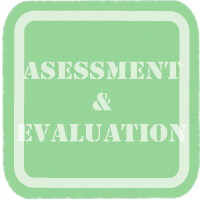 SMART Goal Setting
SMART Goal Setting
 |
Setting goals is an important tool when monitoring and promoting personal growth. It involves reflecting on one’s present capabilities and looking forwards to how one would like to improve upon those capabilities. When setting goals, however, there are some criteria that can used in order to maximize the probability of these goals being reached. The criteria are stated in the acronym SMART; this page will discuss what that acronym stands for and how it can be used. |
What does SMART stand for?
When setting goals, keep the following criteria in mind:
- Specific: A specific goal addresses as many descriptor questions as possible (Who, What, When, Where, Why and How). It has a greater chance of being met if a specific plan is made for its completion.
- Measurable: This involves deciding what will measure when the goal is attained; a finish line has to be set before it can be crossed.
- Attainable: To properly set a goal, you must set the steps that are necessary to reach it. This scaffolding ensures that the goal actually is attainable, and therefore produces motivation as the goal’s completion has become a reality.
- Realistic: A goal must be set in the spirit of desiring its completion. In setting a goal, one can determine if it’s realistic by asking the following questions; am I capable of attaining this goal? Am I willing to work for this goal? Setting an unrealistic goal will often result in a decrease in motivation over time.
- Timely: Setting the goal within a time frame helps to motivate; without an end goal, there is no set limit to help drive the goal’s completion.
To read more about establishing the SMART goals, click here (creating SMART goals link) or for a checklist to assess you SMART goals, click here (how to write SMART goals)
back to top
Why should goals be SMART?
The purpose of setting goals is for those goals to be achieved; using the SMART criteria helps ensure that the goals are within reason and attainable. The criteria force the goal setter to address certain issues pertaining to those goals that simultaneously increase motivation and help set the steps necessary to achieve the goal. A detailed, well-setup goal has the best chance of being achieved.
Who should be setting SMART goals?
back to top

Creating S.M.A.R.T. Goals
http://www.topachievement.com/smart.html
How to write SMART goals
https://www.brocku.ca/hr/employment/PR&P/Smart%20Goals.pdf
SMART goals template
http://www.wasco.k12.ca.us/SmartGoals%20Template.pdf


